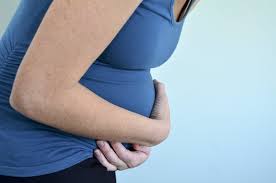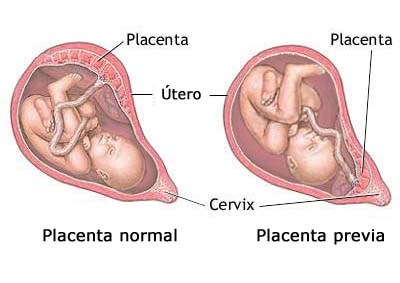|
| |
Placenta Previa and
Homeopathy
Homeopathic remedies will help a pregnant women
with symptoms of placenta previa.
Contact us to learn
more!
Click Here to Buy Remedies and Supplements from Homeopathic Remedies Online Store

What is Placenta Previa?
-
Placenta previa is a
condition in which the placenta partially or wholly blocks the neck of the
uterus, thus interfering with normal delivery of a baby.
-
Placenta previa occurs in
about 1 out of every 200 pregnancies.
-
Often the condition is detected in
the third trimester, but it’s sometimes spotted at as early as 17 weeks
either in a routine ultrasound or because some bleeding or pain is
occurring. In this condition the placenta lies low in the uterus and may
grow to partially or completely cover the opening of the uterus, the cervix.
-
Many cases of placenta previa
resolve themselves as the uterus grows and the placenta naturally moves
upward.
-
If the placenta is across the cervix it's unlikely to
resolve with time. The later in pregnancy that placenta previa exists,
the more likely it will be present at the time of delivery.
-
In more pronounced cases, the previa completely covers the cervical
opening and will not move far enough up, regardless of treatment. In these
cases, a caesarian section delivery is necessary.

Types of Placenta Previa
- Type I: Low
lying placenta - the lower margin within 5 cm of the cervix.
- Type II :
Marginal placenta previa - with the placenta just reaches the cervix.
- Type III:
Partial placenta previa - with the placenta partially covers the the
opening of the cervix.
- Type IV: Total placenta previa
- the placenta completely covers to
opening of the cervix. This type has the most serious risk to the mother.
Symptoms of Placenta Previa - Bleeding As The Main
Symptom
- A first bleed, called a warning bleed, is slight and is
noticed by the woman as bright blood.
- Bleeding that is
spontaneous and causeless, unless it follows
intercourse.
- Bleeding is often painless unless it occurs with the
onset of labor.
- Bleeding is recurrent
and occurs at intervals and progressively becomes severe.
- Causeless, painless and recurrent bleeding in the third
trimester is typical of placenta previa.
- Types I and II placenta previa may to bleed just once
near term or at the onset of labor.
- Types III and IV placenta previa cause much more
bleeding than Types I and II plus bleeding occurs earlier in the 3rd
trimester.
- The anterior placenta previa gets pulled up during labor and does not compromise the
baby's oxygenation to the
same extent as does the posterior placenta previa.
Other Additional Symptoms May Include
- digestive complaints
- frequent bruising
- hemorrhoids
- tendency to depression
- varicose veins
Placenta Previa Is More Common Among Women who:
- Are age 35 or older
- Are of a race other than white
- Have delivered at least one baby
- Had placenta previa with a previous pregnancy
- Had A C-section
- Had Surgery to remove uterine fibroids
- Had Dilation and curettage, though this presents a much
lower risk
- Smoke
- Use cocaine
Persistent Types of Placenta Previa Have Been Associated
With
- A large placenta, such as with a multiple pregnancy
- Being 35 or older during pregnancy
- Having had babies
- Scars in the lining of the uterus, such as from previous
surgery
Homeopathic Remedies for Placenta Previa
- Ferrum met
-
Erigeron
Miscarriage due to exercise, with profuse bleeding. Bright red blood
loss, gushing of blood. Ailments from wounds and trauma. Indolence, aversion
to work. Loss of ambition, afternoon and evening. Irritability in the
morning. Frightened waking from a dream. Weeping during urination. Cheerful
after urination. Painful urination during metrorrhagie
-
Nux Vomica
-
Phosphorous
-
Ipecac
-
Sabina
Special action on uterus also upon serous and
fibrous membranes. Miscarriage especially in third month. Bleeding
during pregnancy, during labor and after delivery. It stimulates expulsion
of mola. Placenta previa and retained placenta. Labor pains painful, from
sacrum to inguinal region, or from sacrum to pubis, or stitching in the
vagina upwards. Other symptoms are Copious menses, gushing, bright red, with
(dark) clots. Metrorrhagia between menses, and during climacteric period.
Uterus myomatosus, endometrioses Endometriumcarcinoma with bleeding.
Condylomata.
-
Sepia
For tendency to get miscarriages during the fifth
to the seventh month of a term of pregnancy. Persistent morning sickness
every day. Sensation of a ball like structure within the uterus. The painful
sensations may make women feel like they need to bear or bend down with the
pain. The woman may also suffer from a prolapsed uterus, and can often be
affected by fibroids in the uterine tissues. The woman also finds any
motions performed by the developing fetus to be intolerable and extremely
uncomfortable. Yellow colored discharges. There are also extreme and severe
itching sensations in the vulva which can trigger the miscarriage. Chills
running down the body; physical exhaustion at most times of the day and
night. Worse in the mornings and in the evenings; dampness aggravates. Very
weary, and worn out from fatigue. Depression, and indifference to most
things, aversion to sexual intercourse. The woman in addition desires to be
left alone at most times.
- Secale
- Veratrum Album
| |
|